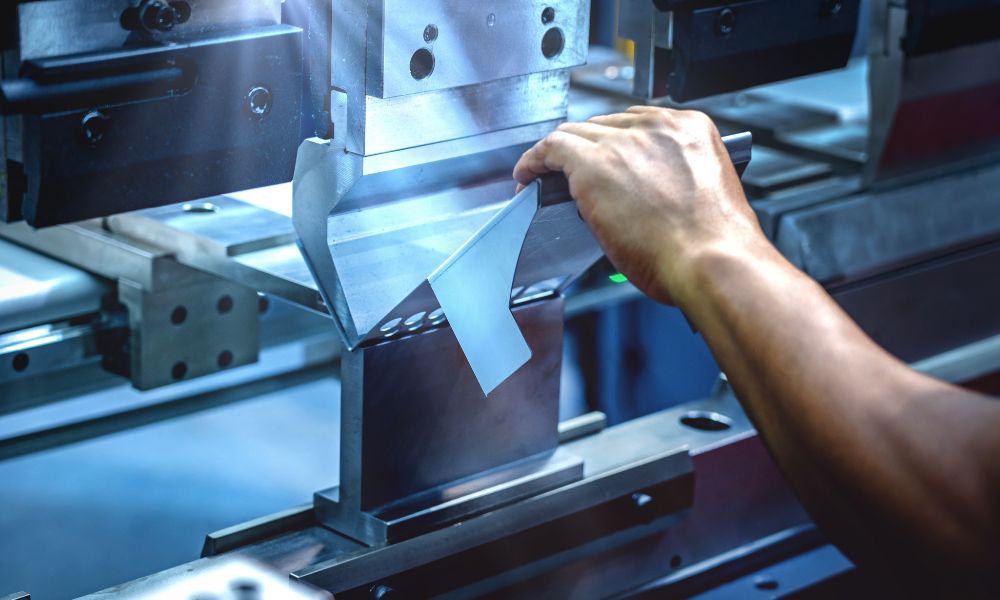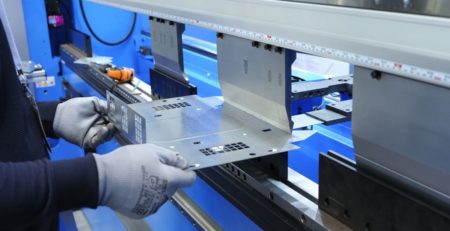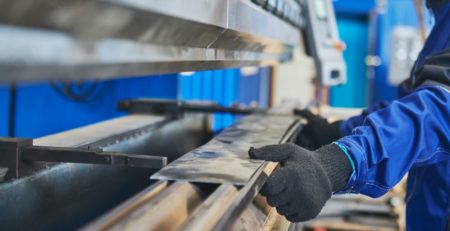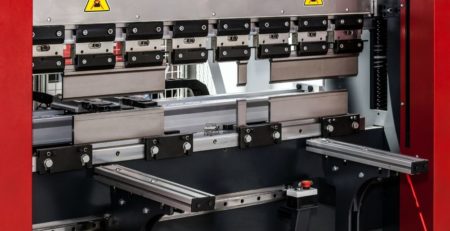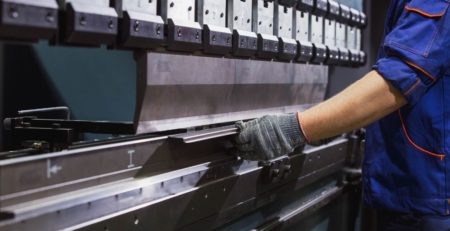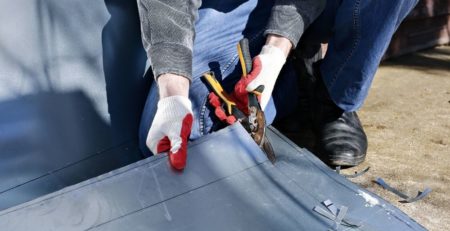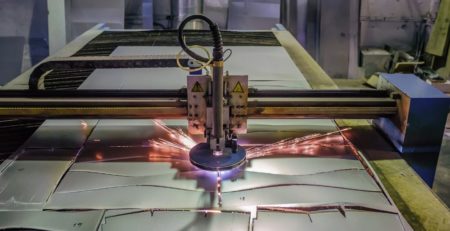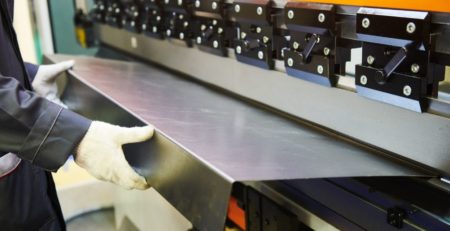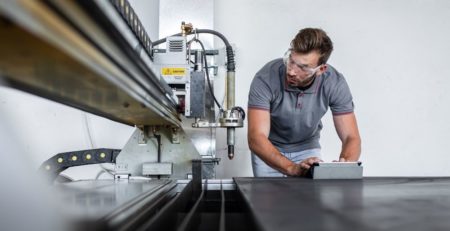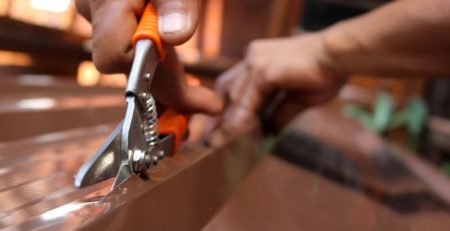The 7 Different Types of Sheet Metal Bending
People have been bending and shaping metal since the Bronze Age. With the dawn of the Iron Age and the discovery of steel, metalworking focused on producing weapons inexpensively to equip armies. But in the Industrial Age, steel became indispensable in construction and manufacturing. It became possible to build taller buildings and bigger machines.
Instead of forging and hammering metal into desired shapes, metalworkers began to use machines called press brakes to apply the force necessary to bend, roll, and stamp metal. Although press brakes continue to become more sophisticated, adding computerized controls to the seven different types of sheet metal bending has remained relatively constant.
A press brake applies powerful force to sheet metal, pushing it down into a V- or U- shaped die, over the edge of a die, or between rollers that bend the metal. These methods can now create exact bends in sheet metal, with a “radius” (the measurement of the distance between the sides of the bend) accurate to within fractions of millimeters. Common forms of sheet metal bending include bottoming, air bending, coining, wiping, folding, rolling, and joggling.
Bottoming
“Bottoming” refers to a press brake process where the machine presses the workpiece, a section of sheet metal, all the way to the bottom of the die, so the workpiece touches the edges of the V or U shape of the die. This creates a bend in the metal that is precisely the depth and width of the negative space in the die, resulting in a more precise bend.
Air Bending
While air bending may use a similar die in a V or U shape as bottoming, in this bending, the workpiece doesn’t touch the edges of the depression in the die. The die creates negative space for the press brake to push the metal into, without going to the bottom of the V or U.
Air bending risks less precision than bottoming, but with computer guidance, press brakes can create shallower bends with a consistent radius between multiple pieces.
Coining
Coining is a lot like how it sounds: the process of making coins involves stamping metal with a precise design. The design must be consistent to produce authentic coins.
When coining sheet metal, the press brake forces sheet metal down onto a die that bears the design required. The force bends the metal into the design, embossing the sheet with the desired design.
Wiping
Wiping isn’t about cleaning sheet metal; it’s still about bending it. The wiping process forces sheet metal down over the edge of the die, forming a bend. The press brake “wipes” down the metal plate, pressing it down until the metal bends over an outside edge of the die, and the machine applying the force “wipes” down along or past the workpiece to its end or edge. Think of folding wrapping paper over the edge of a box, and you’ll be able to visualize the “wiping” type of sheet metal bending.
Folding
Instead of using a die to create the shape desired when bending sheet metal, folding uses clamps to hold the piece in place and applies force to fold the metal at a specified angle. It’s possible to create several folds in the same piece of metal, creating a two-sided channel or a square or rectangular hollow tube (which is then welded closed).
Press brakes, especially tandem press brakes, where two machines work together on the same piece of metal, can create folds in long pieces of sheet metal up to the thickness the machine’s specifications permit.
Rolling
Making curves in or forming pipes out of flat pieces of sheet metal sounds complicated, but rolling machines can do it. A metal rolling machine feeds the sheet metal between two or sometimes three powerful rollers, causing the sheet to emerge in a curve. To increase the curve, the machine operator reverses the rollers, running the metal back through the rollers in the other direction. The metalworker repeats the operation until the desired curve, or the tube shape, is wholly formed.
Joggling
It’s a funny word that you may use interchangeably with “jiggling,” but in metalworking, “joggling” has a specific meaning. It defines a process where a machine creates bends in both directions on a piece of sheet metal, resulting in an “S” or “Z” shape.
Joggling is suitable for situations where a piece of sheet metal requires a repeated pattern of bends, back and forth, or for sheets of metal that must create allowances for overlapping other sheets of metal. We call these overlaps “joggle joints.” They are often minute, measured in fractions of inches or just a few millimeters.
Computer-guided metal bending machines enable workers to create these joggle joints to the required specifications. The aerospace industry often needs sheet metal formed with these types of joints to construct aircraft.
Hydraulic CNC Press Brakes
Press brakes have evolved from manually operated tools to sophisticated, computer-guided machinery powered by electricity or hydraulic power. Hydraulic CNC press brakes provide exceptional precision combing with power and speed, enabling efficient and accurate production. This enables metalworking operations to expand their productivity and take on more work without increasing the time to delivery.
Mac-Tech has the experience and expertise to help you select the type of press brake that will work for your operation and fit within your budget. We offer new and pre-owned press brakes and various metal cutting machines, including laser cutters, plasma cutters, waterjets, and metal saws.
We also provide service and parts. When you buy machinery from Mac-Tech, you’re buying from a company that you can call on for preventative maintenance, replacement parts, oil changes, and training for your team of metal workers.
Metal fabrication will continue to evolve, and the tools the industry uses must be capable of producing precision cuts, folds, bends, imprints, and engraving to keep up. Customers expect short delivery times even for the most demanding metalworking projects. With the right machines and support from Mac-Tech, you can accept more of those challenging assignments. Contact us today to discuss your metal fabrication machinery needs.


